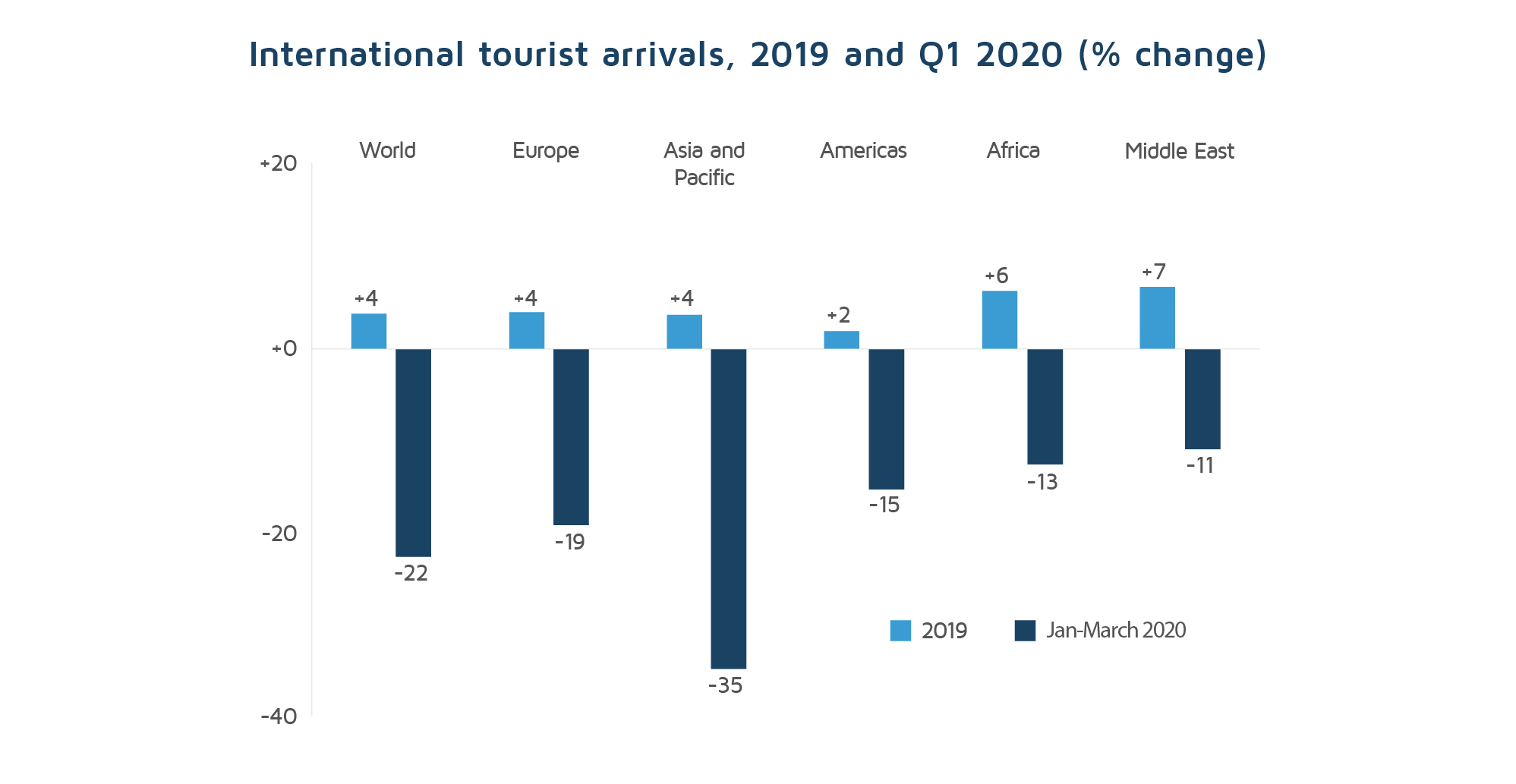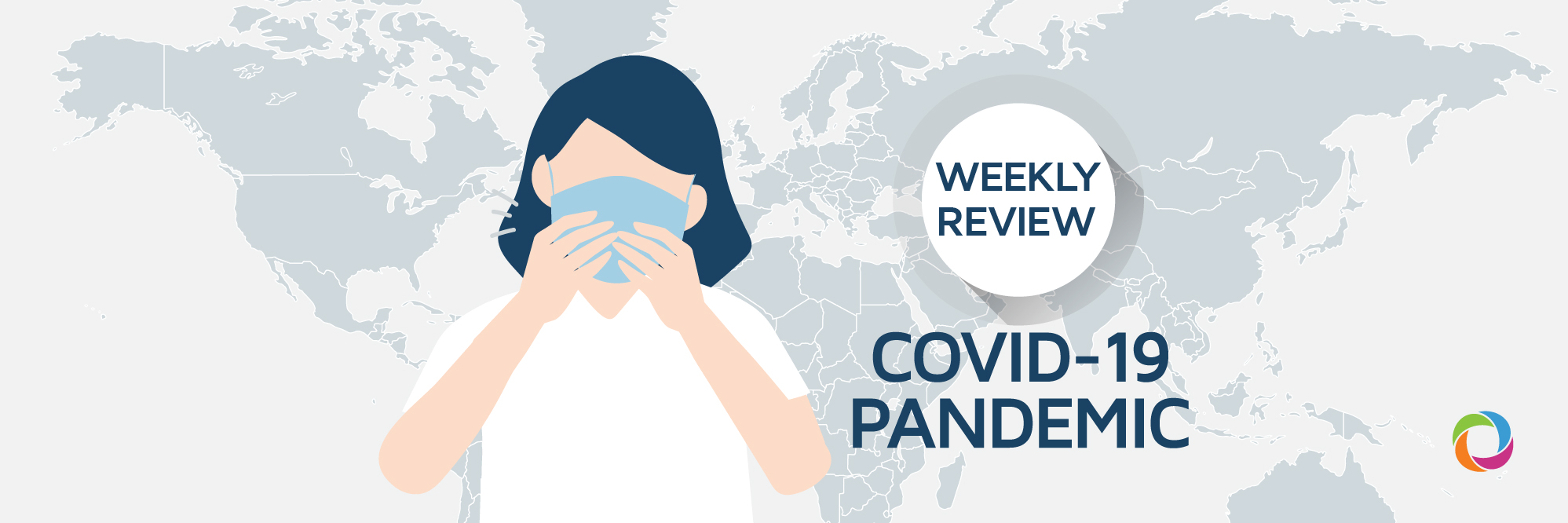(May 7 – 13, 2020)
Roughly 660,000 new COVID-19 cases have been recorded since DevelopmentAid’s last review of the coronavirus situation across the world, released on May 6. Globally, over 4.2 million people have been diagnosed with the virus since the first case was reported in Wuhan, China, on the last day of 2019. Nearly 1.5 million patients have recovered from the disease while over 290,000 have died as a result of it.
The top 10 countries with the highest number of recorded COVID-19 cases currently account for 71% (3.06 million) of the number of patients worldwide. The US has been the hardest hit with over 1.3 million Americans diagnosed with the virus and is currently the most affected nation in terms of the number of patients. The Russian Federation has been dealing with a spike of new cases since early May and is currently the second most affected country with over 230,000 cases officially reported. Spain, where the curve has flattened over the last few weeks, comes third in the most affected states with 228,000 COVID-19 cases. Meanwhile, during the last seven days, China has dropped from the top-10 most affected states.
Despite the immense pressure on national health systems and their economies, developed countries continue to adhere to their pledge to sustain developing states. Via multilateral agencies such as the World Bank Group, the European Investment Bank or the Asian Development Bank, and bilateral official development assistance funneled directly to least developed states, nations have remained united in the face of the pandemic and its consequences.
Indeed, the need to present a united front and address the challenges that the COVID-19 pandemic has presented to humanity is more vital than ever before. The ‘Urgency to act’ for sustainable development was underlined during a wide-ranging policy discussion which focused on a range of multilateral solutions to ease the pandemic while also getting back on track in efforts to achieve the 17 Sustainable Development Goals (SDGs) defined by the UN.
During the event, Mona Juul, President of the Economic and Social Council (ECOSOC), stated that almost half the global workforce is in immediate danger of being unemployed while other global goals are being reversed such as an increase in global poverty for the first time since 1998, with some regions slipping back to levels last seen 30 years ago. Malaria mortality levels threaten to revert to those of 20 years ago and violence against women and girls “has become a shadow pandemic, with the number of victims increasing to the hundreds of millions worldwide”, she bemoaned.
“These are incomprehensible setbacks to our hard-won development gains”, stressed the ECOSOC chief, but “we must ask ourselves: how can we find solid footing in the new evolving normal?”
As the world’s biggest organization in the humanitarian sector, the United Nations will need to keep in mind the dual imperatives of responding urgently to stem the impact of the pandemic while helping governments and people respond in a way that enables a better recovery and a more resilient future, according to deputy UN chief, Amina J. Mohammed .
According to Amina, when allocating resources close attention must be paid to the needs of conflict- and disaster-affected countries, least developed countries, landlocked developing countries and small island developing states.
COVID-19 Vs AIDS
Disruptions to the AIDS antiretroviral therapy supply chain together with overwhelmed health services may lead to a dramatic increase in mortality caused by both AIDS-related illnesses and tuberculosis in Sub-Saharan Africa.
A modelling group convened by the World Health Organization and UNAIDS has estimated that, if efforts are not made to mitigate and overcome interruptions to health services and supplies during the COVID-19 pandemic, a six-month disruption of antiretroviral therapy could effectively set the clock back to 2008 when more than 950,000 AIDS-related deaths were observed in the region.
However, development organizations have confirmed that the COVID-19 pandemic is no excuse for diverting investment from HIV/AIDS.
Humanitarian Air Bridge and support to the Western Balkans
The European Commission has set up a Humanitarian Air Bridge to transport humanitarian workers and emergency supplies to support the coronavirus response in some of most critical areas around the world. The first flight, operated in cooperation with France, transported around 60 humanitarian workers from various NGOs and 13 tonnes of humanitarian cargo to the Central African Republic. Two subsequent humanitarian cargo flights followed and transported a further 27 tonnes of humanitarian supplies in total.
National healthcare sectors and small and medium-sized enterprises in the Western Balkans region will benefit from the EUR 1.7 billion provided by the European Investment Bank. This is part of the EUR 3.3 billion package allocated by the EC that was also designed to strengthen the national banking sectors and provide technical assistance to implement development projects and stimulate investment in the region.
The fall of international tourism
The numbers relating to international tourism could fall 60-80% in 2020, with a decrease of 22% already reported in the first quarter of 2020. According to the UN World Tourism Organization (UNWTO), the crisis could place millions of livelihoods at risk and threatens to roll back the progress made towards achieving the Sustainable Development Goals (SDGs).
The organization reported that arrivals in the month of March dropped by 57% following the introduction of lockdowns in many countries, as well as the onset of widespread travel restrictions and the closure of airports and national borders. This translates into a loss of 67 million international arrivals and about US$80 billion in revenue (exports from tourism).
Although Asia and the Pacific show the highest impact in relative and absolute terms (-33 million arrivals), the impact in Europe, although lower in terms of percentage, is still quite high in volume (-22 million).

Source: UNWTO
The same source reports that, at present, world tourism remains at a standstill, as 100% of countries have imposed restrictions on travel. Of 217 destinations worldwide, 156 (72%) have put a complete halt on international tourism according to data collected as of 27th April 2020. In 25% of destinations, restrictions have been in place for at least three months while in 40% of destinations, restrictions were introduced at least two months ago. Recent research by the UNWTO also found that so far no destination has lifted or eased travel restrictions.
Stay tuned for the next DevelopmentAid Coronavirus weekly review to be released on May 20, 2020.
DevelopmentAid offers its members access to complete coverage of the international development sector during the COVID-19 pandemic. Until May 15th, all COVID-19 related tenders and grants are publicly available without any restrictions, at this link.
About COVID-2019 Coronaviruses are a large family of viruses that are common in many different species of animals including camels, cattle, cats and bats. Rarely, animal coronaviruses can infect people and then spread between them such as was the case with MERS (2012) and SARS (2003).The symptoms of the virus are very similar to those of a common cold – runny nose, headache, cough, sore throat, fever, a general feeling of being unwell. Blood tests are necessary in order to prove the presence of the virus in the organism. Named by scientists as the “Wuhan seafood market pneumonia virus”, COVID-19 is a coronavirus, like MERS and SARs, all of which have their origins in bats. Initial reports show that, in the early stages of the outbreak (early January 2020), many of those infected in Wuhan had some link to a large seafood and live animal market – the Huanan Seafood Wholesale Market, mainly its western wing where wildlife animals are traded. This suggests that the virus initially affected an animal and subsequently spread to a person in a what a CDC has called “the species barrier jump”.


